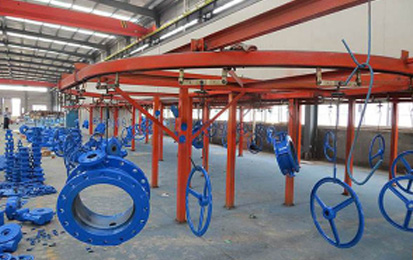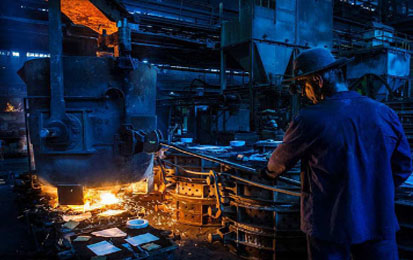Strength performance the strength performance of the valve is the ability of the valve to withstand medium pressure. The valve is a mechanical product bearing internal pressure, so it must have sufficient strength and stiffness to ensure long-term use without rupture or deformation. Sealing performance the sealing performance of the valve refers to the ability of each sealing part of the valve to prevent medium leakage. It is the most important technical performance index of the valve. There are three sealing parts of the valve: the contact between the opening and closing parts and the two sealing surfaces of the valve seat; Matching of packing with valve stem and stuffing box; Connection between valve body and bonnet. The leakage in the former place is called internal leakage, which is commonly referred to as lax closing, which will affect the ability of the valve to cut off the medium. For block valves, internal leakage is not allowed. The leakage at the latter two places is called external leakage, that is, the medium leaks from inside the valve to outside the valve. External leakage will cause material loss, pollute the environment, and even cause accidents in serious cases. For flammable, explosive, toxic or radioactive media, external leakage is not allowed, so the valve must have reliable sealing performance. The flowing medium will produce pressure loss after flowing through the valve (i.e. the pressure difference before and after the valve), that is, the valve has a certain resistance to the flow of the medium, and the medium will consume a certain amount of energy to overcome the resistance of the valve. In terms of energy conservation, when designing and manufacturing the valve, the resistance of the valve to the flowing medium shall be reduced as much as possible. Opening and closing force and opening and closing torque opening and closing force and opening and closing torque refer to the force or torque that must be applied to open or close the valve. When closing the valve, it is necessary to form a certain sealing specific pressure between the opening and closing parts and the two sealing surfaces of the valve seat. At the same time, it is also necessary to overcome the friction between the valve stem and the packing, between the threads of the valve stem and the nut, at the end support of the valve stem and other friction parts. Therefore, a certain closing force and closing torque must be applied. During the opening and closing process of the valve, The required opening and closing force and opening and closing torque are variable, and their maximum value is at the final instant of closing or the initial instant of opening. When designing and manufacturing valves, try to reduce their closing force and closing torque. Opening and closing speed the opening and closing speed is expressed by the time required for the valve to complete an opening or closing action. Generally, there are no strict requirements on the opening and closing speed of the valve, but some working conditions have special requirements on the opening and closing speed. For example, some require rapid opening or closing to prevent accidents, and some require slow closing to prevent water hammer, which should be considered when selecting the valve type. Action sensitivity and reliability refers to the sensitivity of the valve to the change of medium parameters. For throttle valve, pressure reducing valve, regulating valve and other valves used to adjust medium parameters, as well as safety valve, steam trap and other valves with specific functions, its functional sensitivity and reliability are very important technical performance indicators. Service life, which indicates the durability of the valve, is an important performance index of the valve and has great economic significance. It is usually expressed by the opening and closing times that can ensure the sealing requirements, and it can also be expressed by service time. Valve model the valve model shall generally indicate the valve type, driving mode, connection form, structural characteristics, sealing surface material, valve body material, nominal pressure and other elements. The standardization of valve model provides convenience for the design, selection and sales of valves. Nowadays, there are more and more types and materials of valves, and the model preparation of valves is becoming more and more complex. Although there is a unified standard for the preparation of valve models in China, it can not meet the needs of the development of valve industry. At present, valve manufacturers generally adopt the unified numbering method; Where the unified numbering method cannot be adopted, each manufacturer shall formulate the numbering method according to its own needs. 1. Valve model preparation method: jb308-75 valve model preparation method is applicable to gate valve, throttle valve, ball valve, butterfly valve, diaphragm valve, plunger valve, plug valve, check valve, safety valve, pressure reducing valve and drain valve for industrial pipeline. It includes valve model preparation and valve naming. (1) The valve model is composed of 7 units, and its meaning (i.e. unit 1 represents the type code; unit 2 represents the transmission mode code; and so on) also takes q941f-16p as an example, Q represents unit 1 (i.e. the valve type is ball valve); 9 represents 2 units (i.e. transmission mode, including electric mode); 4 represents 3 units (i.e. flange connection in connection mode); 1 represents the structural form of 4-unit valve; F stands for 5 units (i.e. PTFE sealing ring in the sealing material); 16 represents 6 units (i.e. one of the nominal pressure, this demonstration is 1.6Mpa); P stands for 7 units (this demonstration is the material of stainless steel 1Cr18Ni9Ti); The model preparation is shown in Table 1. Table 1: Unit 1 unit 2 unit 3 unit 4 unit 5 unit 6 unit 7 unit indicates type code transmission mode code connection form code structural form code one aspect of valve seat or lining material code nominal pressure code valve body material code (2) type code (i.e. unit 1 of Table 1): type code is represented by Chinese Pinyin letters. As shown in Table 2: Table 2: type code type code gate valve Z diaphragm valve g globe valve J check valve and bottom valve h plunger valve u safety valve a throttle valve l pressure reducing valve y ball valve Q drain valve s butterfly valve D plug valve x (3) transmission mode code (i.e. unit 2 of table 1): transmission mode code is expressed in Arabic numerals. As shown in Table 3: Table 3: transmission mode code transmission mode code electromagnetic 0 bevel gear 5 electromagnetic hydraulic 1 pneumatic 6 electric hydraulic 2 hydraulic 7 worm gear 3 pneumatic hydraulic 8 spur gear 4 electric 9 note: ① this code is omitted for hand wheel, handle and wrench transmission, safety valve, pressure reducing valve and drain valve. ② For pneumatic or hydraulic: normally open type is represented by 6K and 7K; Normally closed type is represented by 6B and 7b; Manual operation of pneumatic belt is represented by 6S; Explosion proof electric is represented by "9b". (4) Connection form code (i.e. unit 3 of Table 1): as shown in Table 4: Table 4: connection form code connection form code internal thread 1 pair clamp 7 external thread 2 clamp 8 flange 4 ferrule 9 welding (including butt welding and socket welding) 6 (5) structural form code (i.e. unit 4 of table 1): the structural form code is expressed in Arabic numerals, As shown in Table 5 ~ table 14: Table 5: structural form of gate valve: structural form code of gate valve: rising stem wedge elastic ram 0 rigid single ram 1 double ram 2 parallel single ram 3 double ram 4 concealed stem wedge single ram 5 double ram 6 table 6: structural form code of stop valve and throttle valve: structural form code of stop valve and throttle valve: straight through 1 angle type 4 DC type 5 balanced right angle Type 6-way 7 table 7: structural form code of ball valve: structural form code of ball valve floating straight through type 1 L-shaped triangular type 4 T-shaped 5 fixed straight through type 7 Table 8: structural form of butterfly valve: Table 9: structural form code of diaphragm valve: structural form code of diaphragm valve ridge type 1 stop type 3 ram type 7 structural form code of butterfly valve lever type 0 vertical plate type 1 inclined plate type 3 table 10: Cock Valve structure type code: plug valve structure type code packing straight through type 3 T-type three-way type 4 four-way type 5 oil seal straight through type 7 T-type three-way type 8 table 11: check valve and bottom valve structure type code: check valve and bottom valve structure type code lifting straight through type 1 vertical lift 2 swing single disc type 4 multi disc type 5 double disc type 6 table 12: safety valve structure type code: safety valve structure Form code spring closed full open with heat sink 0 micro open 1 full open 2 full open with wrench 4 non closed double spring micro open 3 micro open 7 full open 8 micro open 5 full open with control mechanism 6 pulse 9 table 13: structural form code of pressure reducing valve: table 14: structural form code of steam trap: structural form code of steam trap floating ball 1 bell float Type 5 bimetallic plate 7 pulse type 8 thermal power type 9 pressure reducing valve structure type code film type 1 spring film type 2 piston type 3 bellows type 4 lever type 5 (6) valve seat sealing surface or lining material code (i.e. unit 5 in Table 1): the valve seat sealing surface or lining material code is expressed in Chinese pinyin, As shown in table 15: table 15: valve seat sealing surface or lining material code valve seat sealing surface or lining material code copper alloy t hard alloy y rubber x rubber lining J nylon plastic n lead lining Q fluoroplastic f enamel C tin gold bearing alloy (Babbitt alloy) B boronized steel P alloy steel H graphite SM Nitrided steel D note: the sealing surface material is directly processed by the valve body and is represented by "W"; When the sealing surface materials of valve seat and disc (RAM) are different, use the code of low hardness material (except diaphragm valve). (7) Nominal pressure code (i.e. unit 6 in Table 1): the nominal pressure code is expressed in Arabic numerals, and its value is 10 times of the nominal pressure in megapascals (MPA). For valves used in power station industry, when the maximum medium temperature exceeds 530'c, its value is 10 times of the working pressure in megapascals (MPA). (8) Valve body material code (i.e. unit 7 of Table 1): the valve body material code is represented by Chinese Pinyin letters, as shown in table 16: this code is omitted for cast iron with PN less than 1.6Mpa and carbon steel valve bodies with PN greater than 2.5MPa. Table 16: valve body material code: valve body material code: gray cast iron Z 1cr5mozg1cr5mo I malleable cast iron K 1Cr18Ni9Ti, zg1cr18ni9ti P nodular cast iron Q 1cr18ni12mo2ti, zg1cr18ni12moti r copper and copper alloy t 12CrMoV V carbon steel C zg12crmov V
Valve selection and technical performance


 0577-86913387
0577-86913387 










 Service Online
Service Online 



